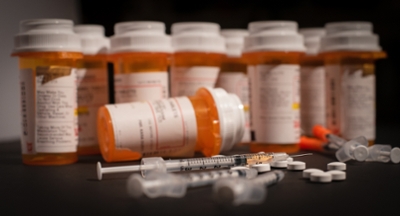Breadcrumb

It seems counterintuitive to treat an addiction to a drug with another drug. However, that's exactly the strategy in the current fight against the opioid epidemic. Two drugs, methadone and buprenorphine, are helping those struggling with addiction to recover—and stay in recovery. "Without the support of medication, the return to use rate is as high as 90 percent among people with opioid use disorder," said Paula Cook, MD, an addiction specialist with University of Utah Health. "In addition, the mortality rate is about 20 percent, which is terrible."
Methadone and buprenorphine are opioids themselves. Both are used to eliminate withdrawal symptoms without providing the high that other opioids do. Buprenorphine is available by prescription, but methadone has to be given in clinic in accordance with federal law. A provider may choose one medication or the other based on the level of addiction and concern for the patient.
"Just like if someone was sick with cancer, the treatment for that cancer would be based on how severe the cancer is," Cook said. "With opioid addiction, we look at different factors, take all those things into consideration, and then make a recommendation."
Drugs known as opioid antagonists are another option for treatment. These drugs do not control withdrawals or cravings, instead blocking opioid receptors in the brain and stopping the high users would normally experience. Naltrexone is a widely used opioid antagonist that can be given via injection every four weeks. "If the patient lives in a rural area, or they're not good at taking pills or medications every day, this could be a great option," Cook said.
Medications play an important part in helping a person with opioid use disorder to stop using, but they shouldn't be discontinued once withdrawal is over. Instead, they should be viewed as a part of long-term treatment. Patients should expect to remain on some form of medication to help with recovery for years.
"Initially, we start people on medications to help them stabilize, to help get their lives back together, and then it would be an interdisciplinary decision on when to withdraw those medications," Cook said. "But just like asthma medications [and] medications for high blood pressure, the goal is to help stabilize people while they're working on their recovery. And if they're working, you don't withdraw the medication in any hurry."
Even when a person is well into recovery, one drug should always be kept on hand. Naloxone can reverse an opioid overdose instantly and should be considered an absolute necessity for anyone with a history of opioid abuse. Patients should also make sure that friends and family know they have the drug, along with how to administer it in case of an overdose. "Naloxone kits are widely available," Cook said. "People can get them for free from the county libraries. They can also go to their insurer and their medical providers to get a prescription and their medical insurance will pay for a kit."
Learn more about addiction recovery services at University of Utah Health.